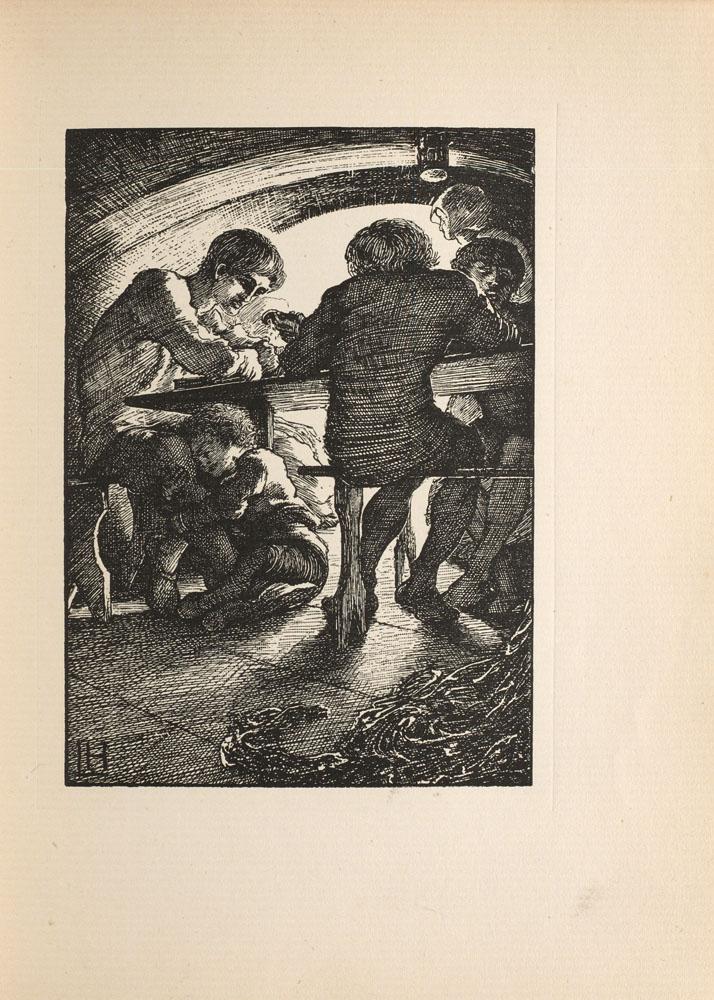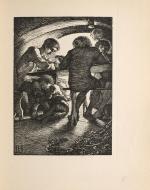Created by Emma Fraschetti on Fri, 10/23/2020 - 13:36
Description:
The Were Wolf, published in 1896 by John Lane at The Bodley Head, is the artistic collaborative project of siblings’ Clemence Housman (1861-1955), and Laurence Housman (1865-1959). Clemence Housman’s The Were Wolf originated as an oral tale to entertain the women in her wood-engraving class at The City and Guilds South London Technical Art School (Natt). It was first published in 1890 as a feature story in the monthly girl’s periodical Atalanta accompanied by Everard Hopkins’ illustrations (Kooistra). The Bodley Head publication, which is the first stand-alone publication of The Were Wolf, contains six-full page illustrations as well as ornamental decorations designed by Laurence and wood-engraved by Clemence herself. The featured illustration, “Rol’s Worship,” showcases Clemence’s influence as a skilled wood engraver as the craft is explicitly represented within its medium. Wood is visually dominant in this image; the farm hall enclosure is made from wood, including the large arch and paneled flooring, and the table in the foreground is made from wood. Wood is represented here as an encompassing foundation for the craftspeople and even the young boy, Rol, who has nestled himself alongside a wooden table leg. A wood-engraving tool, likely a spitsticker, is depicted in the hand of the young engraver seated with his back facing forwards. In the forefront of the illustration, three young male figures are seated at a wooden table. There is one female figure passing in the background and one young boy in the bottom left region of the image underneath the table clasping onto one of the seated men’s legs. As understood from the narrative, these men are wood engraving in a large farm hall that is occupied by both men and women working on their crafts. In this depiction of an unsegregated working environment, Clemence critiques of the gender-segregated classes which she attended at the South London Technical Art School (Natt). Also evident in this illustration is Clemence’s engraving technique; the diagonal graves made on the floorboards give a strong sense of materiality to the illustration making its wood engraving medium apparent. Though the craft of wood engraving exists in the background of The Were Wolf’snarrative action, it is brought to the forefront of this illustration through Laurence’s design and Clemence’s skilled technique.
Sources referenced:
Magazine and Book Illustrations for The Were-Wolf
Textual History and Contemporary Reception of Clemence Housman’s The Were-Wolf
Copyright:
Associated Place(s)
Part of Group:
Featured in Exhibit:
Artist:
- Laurence Housman and Clemence Housman


